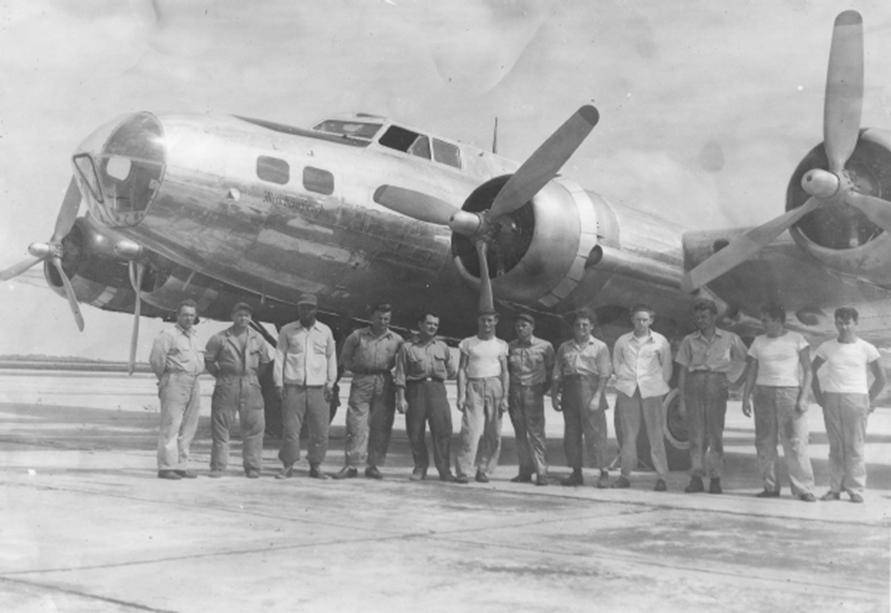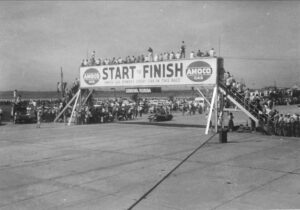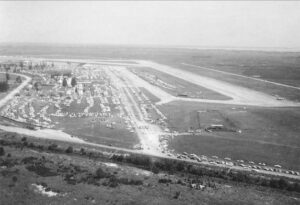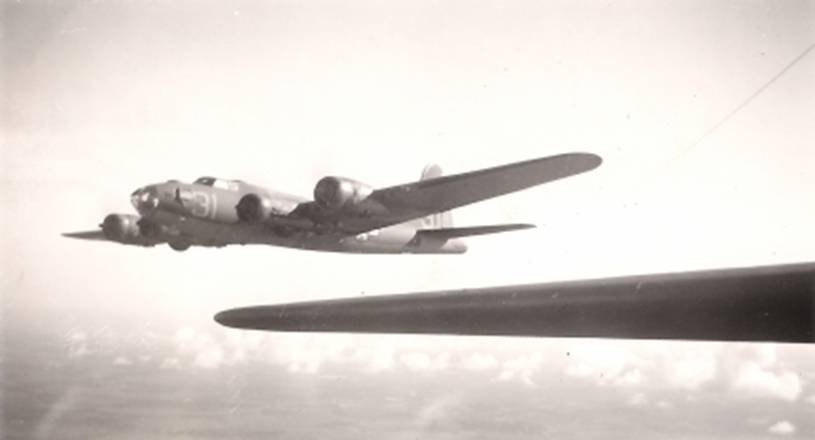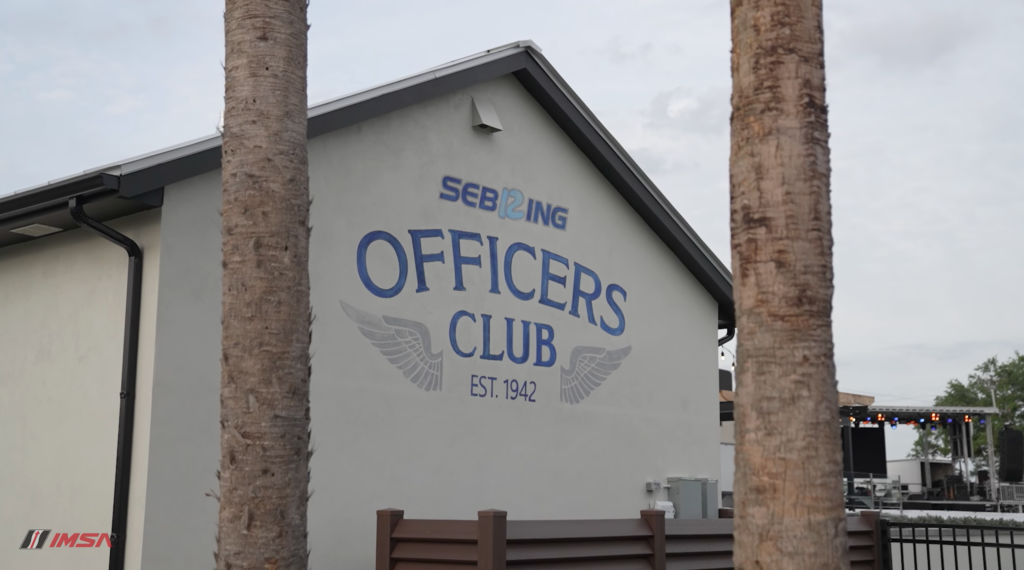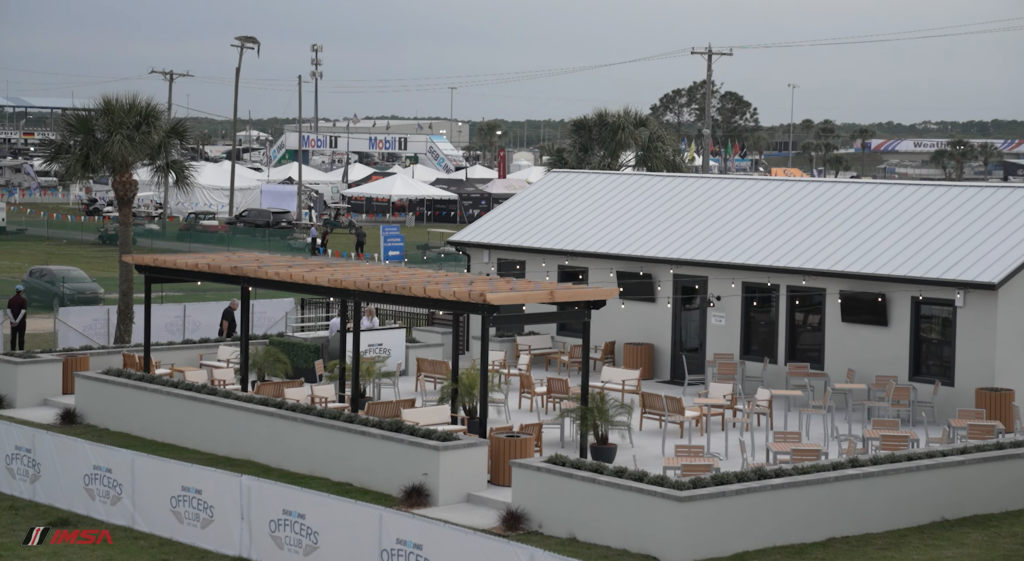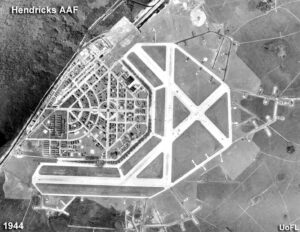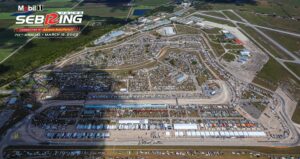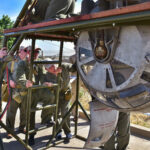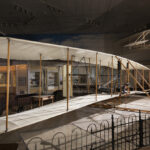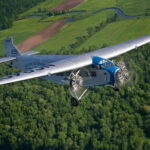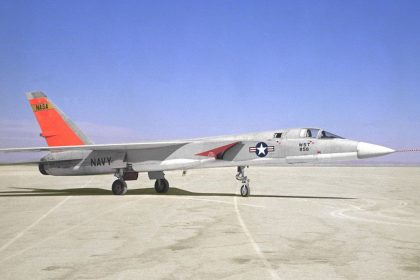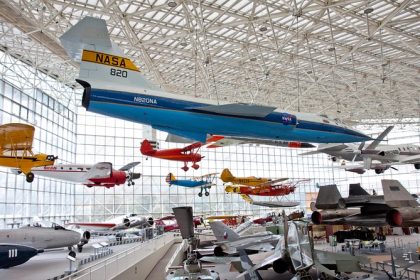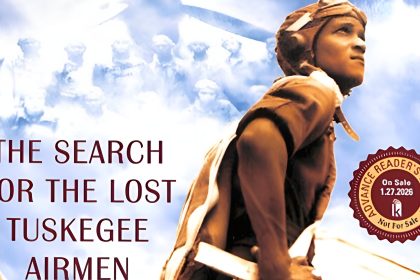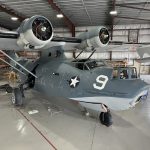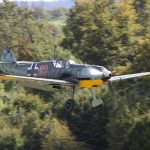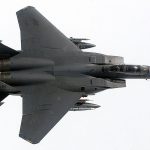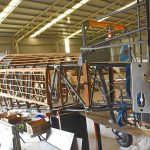By Stephen Chapis
What do the United States Army Air Forces (USAAF) International Motorsports Association (IMSA), and the Mobil 1 Twelve Hours of Sebring have in common? This is admittedly an odd question, but strange as it may be, hundreds of Flying Fortresses and generations of sports racing cars have shared the same expanses of concrete at Hendricks Army Airfield in Sebring, Florida.
As storm clouds brewed across the globe in 1940, Sebring city officials were seeking to have a military base built in their town. On June 12, 1941, after several surveys by Army Air Force officers, Congressman J. Hardin Peterson advised that 9,200 acres of woodlands southeast of town had been approved for a basic flying school. The City of Sebring purchased the land and leased it to the government for one dollar per year for 99 years.
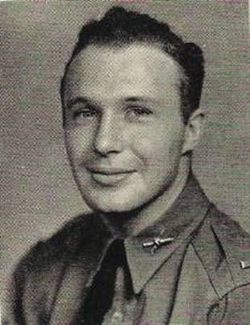
On January 29, 1942, the first B-17 arrived at Hendricks and flight crew training began that March. At its peak the base was home to over 120 B-17s and by the time the base inactivation ordered came down in November 1945, over 10,000 pilots and crews had been trained. Even with those huge numbers, Hendricks had one of the best safety records in the USAAF, with just nine crashes that resulted in 45 fatalities.
The field was turned over to the City of Sebring on May 1, 1946, and became Sebring Air Terminal, but is known today as Sebring Regional Airport & Commerce Park (SEF). However, Sebring is best known as the birthplace of American sports car racing. The first race held at Sebring was the Sam Collier 6-Hour Memorial Race on December 31, 1950. It attracted thirty cars and was won by Frits Koster and Ralph Deshon in a Crosley Hot Shot. The first 12-hour race was held on March 15, 1952, and over the past seventy-two years, the greatest names in auto racing have competed and won at the legendary 3.74-mile, 17-turn road course.
Sports car racing and aviation have always seemed to have a symbiotic relationship and nowhere is it more prevalent than Sebring. Photographs taken during the 12-hour race often feature historic race cars and aircraft, for instance, there is a photo that shows a pair of Alfa Romeo Giulia TZs rounding a corner in 1966, and in the background is a derelict C-82 Packet. Today, that same corner is likely to feature a Corvette Z06 GT3.R with a Gulfstream G800 in the background.
The length and configuration of the track have changed many times over the decades, but even today the race is run on portions of the same eighty-year-old concrete that made up the ramps, taxiways, and runways of Hendricks AAF. Each time the track was reconfigured or updated, a building from Hendricks Field was demolished or removed, the last of which was the control tower, which was brought down in December 1999, restored, and re-erected elsewhere. That left one nondescript building from Hendrick’s World War II days left within the perimeter of the race track. It was the Officer’s Club.
In recent years, IMSA and Sebring International Raceway, began researching ways to preserve and celebrate the history of Hendricks Field, and renovating the last surviving original World War II-era building made perfect sense. Track president Wayne Estes said, “You don’t want to have a building like this and just set it aside. It’s not a museum piece, it should be used. We’re trying to save the spirit of what it was originally intended for and still keeping the memory alive.” On Wednesday, March 13, 2024, the new “Sebring Officer’s Club” was dedicated and was in use during the 72nd Annual Mobile 1 Twelve Hours of Sebring Presented by Cadillac on Saturday, March 16, 2024.
The club is located near the track’s Midway area and Crosley Valley between Turns 6 and 7. It features a bar, indoor seating for 40, patio seating for more than 100, and exclusive trackside deck seating for an additional 40 spectators. By design, the club’s interior is reminiscent of officers’ clubs from the era as well as today.
The walls of the club are decorated with charcoal drawings by local artist Samantha Zimmerman and depict scenes from the 1942 Hendricks Field yearbook, one of which shows the tail of a B-17 protruding out of a set of hangar doors. IMSA President, John Doonan said, “As a kid, I remember watching the Twelve Hours of Sebring and remember the cars going by that hangar.”
[wbn_ads_google_three]
On hand for the dedication was astronaut, and Florida native, Jan Davis, who has a direct connection to Hendricks Field. Davis logged over 673 hours in space during three Space Shuttle flights in 1992 (STS-47, Endeavour), 1994 (STS-60, Discovery), and 1997 (STS-85, Discovery) and her father, Ben Smotherman, trained at Hendricks in 1942. Upon completion of his training, he and his crew deployed to England in a YB-40. On just his seventh mission Smotherman’s Fortress was shot down and he spent 21 months as a POW.
Before Smotherman deployed, he gave Davis’ then-18-year-old mother a necklace. During the dedication last week, Davis was wearing that necklace. “It’s heartwarming to me because he was here,” Davis said. “I know he was in this building, and I don’t know of any other place where I know he was here. It’s a real legacy for the future and people can remember what Hendricks Field was all about.”







